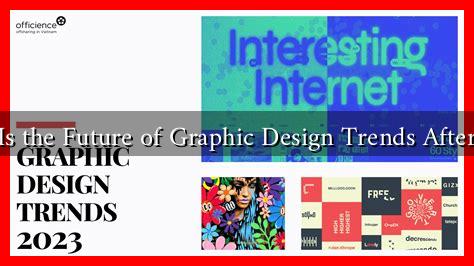-
Table of Contents
What Is the Future of Graphic Design Trends After 2023?
As we move beyond 2023, the landscape of graphic design is poised for significant transformation. With rapid advancements in technology, evolving consumer preferences, and a growing emphasis on sustainability, the future of graphic design is not only exciting but also crucial for brands aiming to stay relevant. This article explores the anticipated trends in graphic design, providing insights into how designers can adapt and thrive in this dynamic environment.
The Rise of Artificial Intelligence in Design
Artificial Intelligence (AI) is set to revolutionize graphic design by automating repetitive tasks and enhancing creativity. Tools like Adobe Sensei and Canva’s Magic Write are already making waves, allowing designers to focus on more strategic aspects of their work.
- Automated Design Generation: AI can generate design variations based on user input, significantly speeding up the creative process.
- Personalization: AI algorithms can analyze user data to create personalized designs that resonate with specific audiences.
- Enhanced Collaboration: AI tools can facilitate better collaboration among teams by providing real-time feedback and suggestions.
According to a report by Forbes, the integration of AI in design processes is expected to increase productivity by up to 40% in the coming years. This shift will allow designers to focus on conceptualization and strategy rather than mundane tasks.
Sustainability and Eco-Friendly Design
As environmental concerns continue to rise, sustainability is becoming a key focus in graphic design. Designers are increasingly tasked with creating eco-friendly solutions that minimize waste and promote sustainability.
- Use of Recycled Materials: Brands are opting for packaging and promotional materials made from recycled resources.
- Minimalist Design: A shift towards minimalism not only reduces material usage but also aligns with consumer preferences for simplicity and clarity.
- Digital Over Print: The move towards digital platforms reduces the need for printed materials, thereby decreasing environmental impact.
Brands like Patagonia have successfully integrated sustainability into their design ethos, proving that eco-friendly practices can enhance brand loyalty and consumer trust.
Emphasis on Inclusivity and Diversity
In an increasingly globalized world, graphic design must reflect the diversity of its audience. Future trends will likely emphasize inclusivity, ensuring that designs resonate with a wide range of cultures, identities, and experiences.
- Diverse Representation: Designs will feature a broader spectrum of characters, models, and narratives that reflect various backgrounds.
- Accessible Design: Ensuring that designs are accessible to individuals with disabilities will become a standard practice.
- Cultural Sensitivity: Designers will need to be more aware of cultural nuances to avoid misrepresentation and foster respect.
Companies like Apple have made strides in inclusive design, showcasing how thoughtful representation can enhance user experience and brand perception.
The Impact of Augmented Reality (AR) and Virtual Reality (VR)
AR and VR technologies are set to redefine how graphic design is perceived and interacted with. These immersive technologies offer new avenues for creativity and engagement.
- Interactive Experiences: Designers can create interactive graphics that allow users to engage with content in a more meaningful way.
- Enhanced Storytelling: AR and VR can bring stories to life, providing users with a unique narrative experience.
- Brand Engagement: Brands can use AR to create immersive marketing campaigns that captivate audiences.
For instance, brands like Nike have utilized AR in their marketing strategies, allowing customers to visualize products in their own environments before making a purchase.
Conclusion
The future of graphic design after 2023 is characterized by technological advancements, a commitment to sustainability, inclusivity, and the integration of immersive technologies. Designers who embrace these trends will not only enhance their creative output but also align with the evolving expectations of consumers. As the industry continues to evolve, staying informed and adaptable will be key to thriving in this dynamic landscape. By leveraging AI, prioritizing sustainability, promoting inclusivity, and exploring AR/VR, graphic designers can shape a future that is not only innovative but also responsible and engaging.


